Akarkara
Akarkara (Anacyclus pyrethrum) is an herb used in traditional medicine that is also sold as a supplement. There is currently a lack of clinical evidence to support its numerous claimed benefits.
Akarkara is most often used for
Last Updated:July 22, 2023
Akarkara is an herb (Anacyclus pyrethrum) used in traditional medicine that contains many phytochemicals, including phenols and flavonoids.[1][2][3][4] Its extracts are claimed to have antimicrobial, anti-inflammatory, anticonvulsive, analgesic (painkilling), and aphrodisiac properties.[1][2][5] Supplements derived from Anacyclus pyrethrum are often sold under the name Akarkara, but other names like pellitory root are also used.
Cell culture (in vitro) experiments show that extracts from Anacyclus pyrethrum have antimicrobial and antioxidant activity.[5][6] Several animal studies have confirmed the antioxidant activity,[7][8] along with anti-inflammatory[2][7][8] and immunomodulatory effects.[9][10][11] Animal studies also show that extracts from Anacyclus pyrethrum can act as a painkiller,[2][12][7] have neuroprotective effects against seizures in models of epilepsy,[13][14][15][16] and enhance memory.[16][17] Further studies in male rats also find evidence of a benefit to sperm health (count, viability, and motility[18][19]) and libido.[20][21]
Unfortunately, these effects have only been demonstrated in cell culture or animal experiments; no clinical data exist. Therefore, it is not currently possible to make conclusions about the potential efficacy of Akarkara supplements on human health. The only human data currently available is from a study of 13 women in whom a 12-week treatment with a face cream containing Anacyclus pyrethrum extracts showed potential to protect skin from damage.[22]
The main drawback is the lack of randomized controlled trials assessing the effects of Akarkara supplements or extracts from Anacyclus pyrethrum on humans. Therefore, it remains to be determined whether Akarkara can provide any benefit to humans. Importantly, the animal studies cited above don’t report any major side effects following treatment with extracts from Anacyclus pyrethrum. Furthermore, pharmacological studies in rodents find evidence of toxicity at high doses (e.g., 2,000 milligrams of extract per kilogram of body weight)[23] but not when extracts from Anacyclus pyrethrum are administered at low doses.[7][23][24] Finally, the one aforementioned human trial with Akarkara did not report on any safety or adverse events data.[22] Consequently, Akarkara supplements are likely safe for human consumption, but because there is currently no data on toxicology, side effects, or adverse outcomes from human studies, it is not yet possible to make firm conclusions about their safety.
The antioxidant, anti-inflammatory, and analgesic properties of Akarkara shown in cell culture and animal experiments are likely caused by the various phytochemicals — phenols, flavonoids, tannins, and polysaccharides — identified in Anacyclus pyrethrum extracts.[1][2][3][4][5][14][19] However, determining exactly how extracts from Anacyclus pyrethrum cause the numerous documented benefits in animal experiments will only be possible if mechanistic studies are completed. Therefore, it is currently unclear exactly how Akarkara might protect against seizures,[13][14][15][16] enhance memory,[16][17] improve sperm health,[18][19] or increase libido,[20][21] as shown in animal models. Furthermore, these effects must be tested in clinical trials to demonstrate the relevance of Akarkara supplements to human health.
- Akarkara
- Vajikaran Rasayana
- Pellitory Root
- Spanish Chamomile
- Pyrethrin
- Anacyclus Pyrethrum
Studies in rats use a range of 50-150 mg/kg bodyweight Anacyclus pyrethrum roots (DC) daily, with all tested extracts (ethanolic, petroleum ether, water) appearing to be effective. This results in an estimated human dosage range of:
- 550-1,600 mg daily for a 150 lb person
- 700-2,200 mg daily for a 200 lb person
- 900-2,700 mg daily for a 250 lb person
These are just estimates as to the effective range of the root extract in humans, since there is currently no human evidence to base recommendations on.
🚧 Under Renovation 🚧
The information in this section is slated for renovation — it will soon be transformed into a more usable (and readable!) form in the coming months. As such, the text in this section may be out of date and not up to Examine’s current standards for writing style.
- ^Elazzouzi H, Fadili K, Cherrat A, Amalich S, Zekri N, Zerkani H, Tagnaout I, Hano C, Lorenzo JM, Zair TPhytochemistry, Biological and Pharmacological Activities of the (L.) Lag: A Systematic Review.Plants (Basel).(2022-Sep-30)
- ^Fatima Zahra Jawhari, Abdelfattah El Moussaoui, Mohammed Bourhia, Hamada Imtara, Hamza Mechchate, Imane Es-Safi, Riaz Ullah, Essam Ezzeldin, Gamal A Mostafa, Andriy Grafov, Samir Ibenmoussa, Dalila Bousta, Amina BariAnacyclus pyrethrum (L): Chemical Composition, Analgesic, Anti-Inflammatory, and Wound Healing PropertiesMolecules.(2020 Nov 23)
- ^Boonen J, Sharma V, Dixit VK, Burvenich C, De Spiegeleer BLC-MS N-alkylamide profiling of an ethanolic Anacyclus pyrethrum root extract.Planta Med.(2012-Nov)
- ^Althaus JB, Malyszek C, Kaiser M, Brun R, Schmidt TJAlkamides from Anacyclus pyrethrum L. and Their in Vitro Antiprotozoal Activity.Molecules.(2017-May-12)
- ^Jawhari FZ, Moussaoui AEL, Bourhia M, Imtara H, Saghrouchni H, Ammor K, Ouassou H, Elamine Y, Ullah R, Ezzeldin E, Mostafa GAE, Bari Avar. (L.) and var. (Ball) Maire: Correlation between Total Phenolic and Flavonoid Contents with Antioxidant and Antimicrobial Activities of Chemically Characterized Extracts.Plants (Basel).(2021-Jan-13)
- ^Jalayer-Naderi N, Niakan M, Khodadadi E, Mohamadi-Motlagh MThe antibacterial activity of methanolic and extract on .Iran J Microbiol.(2016-Dec)
- ^Manouze H, Bouchatta O, Gadhi AC, Bennis M, Sokar Z, Ba-M'hamed SAnti-inflammatory, Antinociceptive, and Antioxidant Activities of Methanol and Aqueous Extracts of Roots.Front Pharmacol.(2017)
- ^Alliouche Kerboua K, Benosmane L, Namoune S, Ouled-Diaf K, Ghaliaoui N, Bendjeddou DAnti-inflammatory and antioxidant activity of the hot water-soluble polysaccharides from Anacyclus pyrethrum (L.) Lag. roots.J Ethnopharmacol.(2021-Dec-05)
- ^Yousaf F, Shahid M, Riaz M, Atta A, Fatima HImmunomodulatory potential of Anacyclus pyrethrum (L.) and Mucuna pruriens (L.) In male albino rats.J Biol Regul Homeost Agents.(2017)
- ^Sharma V, Thakur M, Chauhan NS, Dixit VKImmunomodulatory activity of petroleum ether extract of Anacyclus pyrethrum.Pharm Biol.(2010-Nov)
- ^Bendjeddou D, Lalaoui K, Satta DImmunostimulating activity of the hot water-soluble polysaccharide extracts of Anacyclus pyrethrum, Alpinia galanga and Citrullus colocynthis.J Ethnopharmacol.(2003-Oct)
- ^Muralikrishnan K, Asokan S, Geetha Priya PR, Zameer Ahmed KS, Ayyappadasan GComparative Evaluation of the Local Anesthetic Activity of Root Extract of and its Interaction at the Site of Injection in Guinea Pigs.Anesth Essays Res.(2017)
- ^Manouze H, Ghestem A, Bennis M, Sokar Z, Benoliel JJ, Becker C, Ba-M'hamed S, Bernard CAntiseizure effects of Anacyclus pyrethrum in socially isolated rats with and without a positive handling strategy.Epilepsia.(2021-Oct)
- ^Manouze H, Bouchatta O, Bennis M, Sokar Z, Ba-M'hamed SAnticonvulsive and neuroprotective effects of aqueous and methanolic extracts of Anacyclus pyrethrum root in kainic acid-induced-status epilepticus in mice.Epilepsy Res.(2019-Dec)
- ^Pahuja M, Mehla J, Reeta KH, Joshi S, Gupta YKRoot extract of Anacyclus pyrethrum ameliorates seizures, seizure-induced oxidative stress and cognitive impairment in experimental animals.Epilepsy Res.(2012-Feb)
- ^Pahuja M, Mehla J, Reeta KH, Tripathi M, Gupta YKEffect of Anacyclus pyrethrum on pentylenetetrazole-induced kindling, spatial memory, oxidative stress and rho-kinase II expression in mice.Neurochem Res.(2013-Mar)
- ^Sujith K et al.Memory-enhancing activity of Anacyclus pyrethrum in albino Wistar rats.Asian Pac J Trop Dis.(2012)
- ^Haghmorad D, Mahmoudi MB, Haghighi P, Alidadiani P, Shahvazian E, Tavasolian P, Hosseini M, Mahmoudi MImprovement of fertility parameters with Tribulus Terrestris and Anacyclus Pyrethrum treatment in male rats.Int Braz J Urol.(2019)
- ^Sharma V, Boonen J, Spiegeleer BD, Dixit VKAndrogenic and spermatogenic activity of alkylamide-rich ethanol solution extract of Anacyclus pyrethrum DC.Phytother Res.(2013-Jan)
- ^Sharma V, Thakur M, Chauhan NS, Dixit VKEffects of petroleum ether extract of Anacyclus pyrethrum DC. on sexual behavior in male rats.Zhong Xi Yi Jie He Xue Bao.(2010-Aug)
- ^Sharma V et al.Evaluation of the Anabolic, Aphrodisiac and Reproductive Activity of Anacyclus Pyrethrum DC in Male Rats.Sci Pharm.(2009)
- ^Muhammad Saleem Qureshi, Qazi Adnan Jamil, Naveed Akhtar, Naheed AkhtarFormulation and characterization of Anacyclus Pyrethrum Emulgels and its in vitro and in vivo evaluation as cosmeceutical productJ Cosmet Dermatol.(2022 Dec)
- ^Jawhari FZ, El Moussaoui A, Imtara H, Mechchate H, Es-Safi I, Bouhrim M, Kharchoufa L, Miry A, Bousta D, Bari AEvaluation of the acute toxicity of the extracts of var. (L.) and var. Maire in Swiss mice.Vet World.(2021-Feb)
- ^Sujith K et al.Toxicological evaluation of ethanolic extract of Anacyclus pyrethrum in albino wistar rats.Asian Pac J Trop Dis.(2012)





